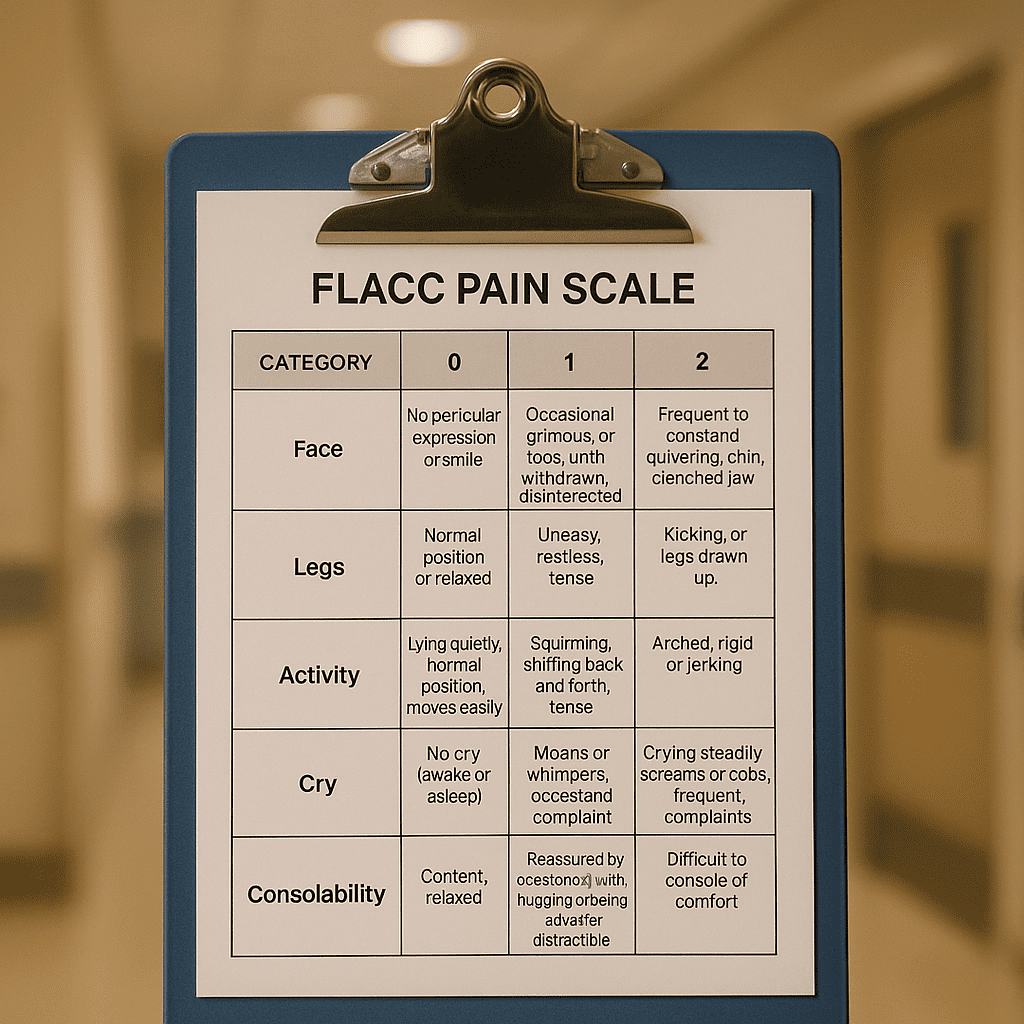Assessing pain in children can be challenging, especially since younger patients may not have the vocabulary or ability to describe how they feel. For nurses and nursing students preparing for the NCLEX, understanding pediatric pain scales is a must. Two of the most widely used tools in pediatric nursing care are the FLACC Scale and the Wong-Baker Faces Scale. These tools help every registered nurse (RN nurse) provide accurate, compassionate care while ensuring proper pain management.
Why Pediatric Pain Assessment Matters
Unlike adults, children often express pain through behavior, crying, or facial expressions. A nurse must use age-appropriate tools to evaluate pain effectively. Proper pain assessment is crucial for:
- Administering the correct medication dose.
- Preventing under-treatment or over-treatment.
- Improving patient comfort and recovery.
- Meeting NCLEX testing standards for safe and effective care.
1. FLACC Pain Scale
FLACC stands for Face, Legs, Activity, Cry, Consolability. It is especially useful for children aged 2 months to 7 years, or for non-verbal patients who cannot self-report pain.
How it Works:
Each category is scored 0–2:
- Face: No expression (0) → Grimacing/frown (2).
- Legs: Normal (0) → Kicking/drawn up (2).
- Activity: Lying quietly (0) → Arched/rigid/jerking (2).
- Cry: No cry (0) → Steady crying/screaming (2).
- Consolability: Content/relaxed (0) → Difficult to console (2).
Total Score Range: 0–10
- 0 = No pain
- 1–3 = Mild pain
- 4–6 = Moderate pain
- 7–10 = Severe pain
💡 Nursing Note: The FLACC Scale is highly testable on the NCLEX and appears in many nursing bundles covering pediatrics and pain management.
2. Wong-Baker FACES Pain Rating Scale
The Wong-Baker Faces Scale is a self-report tool best suited for children aged 3 years and older.
How it Works:
- The nurse shows the child a row of cartoon faces ranging from smiling (0 = no pain) to crying face (10 = worst pain).
- The child points to the face that best matches their pain.
💡 Nursing Tip:
- Use simple language like: “Point to the face that shows how you feel.”
- Always combine this scale with observation for a full assessment.
Key NCLEX Nursing Tips
- Infants & Toddlers (non-verbal): Use FLACC.
- Preschool & School-Age Children: Use Wong-Baker Faces.
- Adolescents: May use a numeric pain scale (0–10) similar to adults.
- Registered nurses must document the tool used, the score, and interventions given.
- Include pain reassessment after interventions—this is a common NCLEX question.
Final Thoughts
For pediatric patients, pain is not always obvious. The FLACC Scale and the Wong-Baker Faces Scale empower every nurse to accurately assess and manage pain in children. Whether you are a nursing student, a new RN nurse, or reviewing your nursing bundle before the NCLEX, mastering pediatric pain scales ensures safe, effective, and compassionate care.

